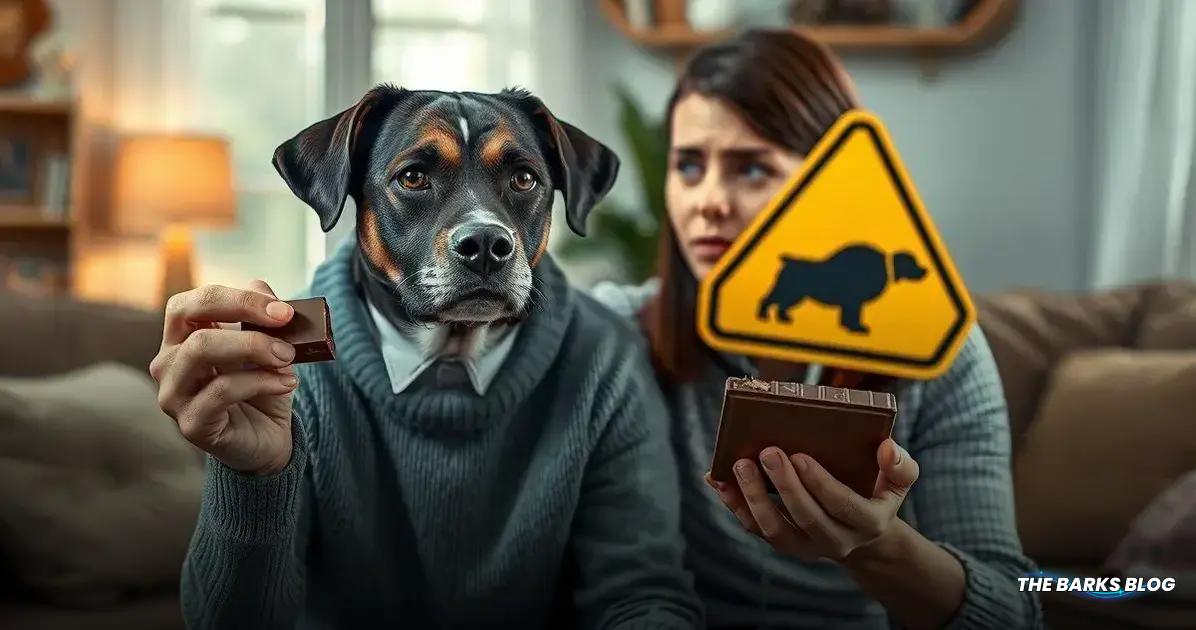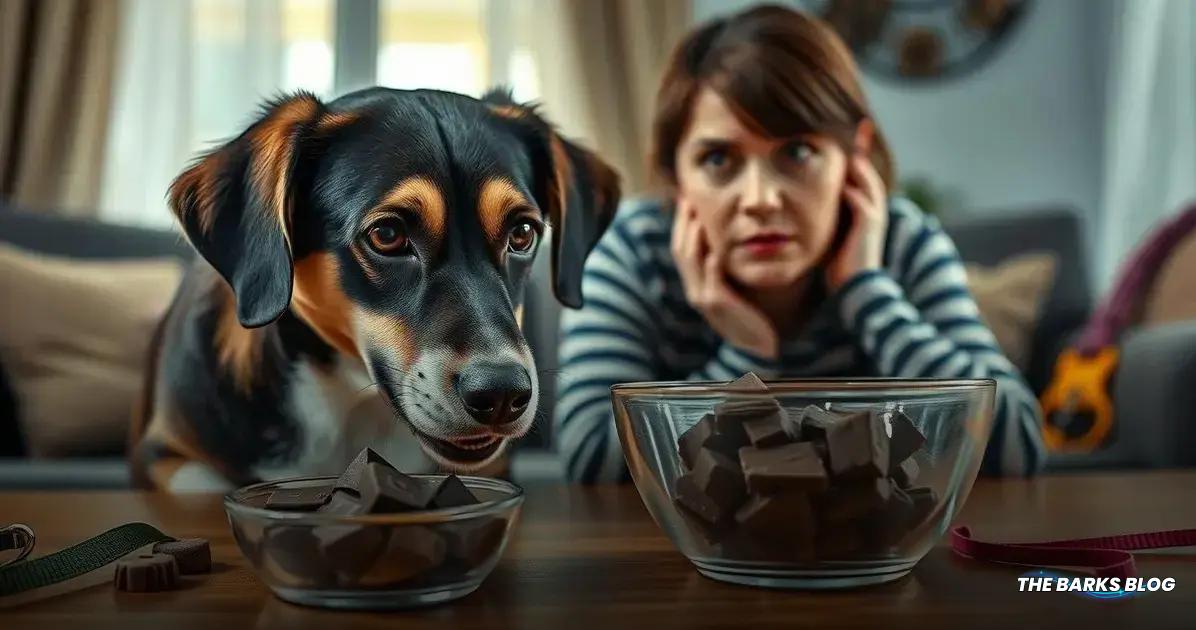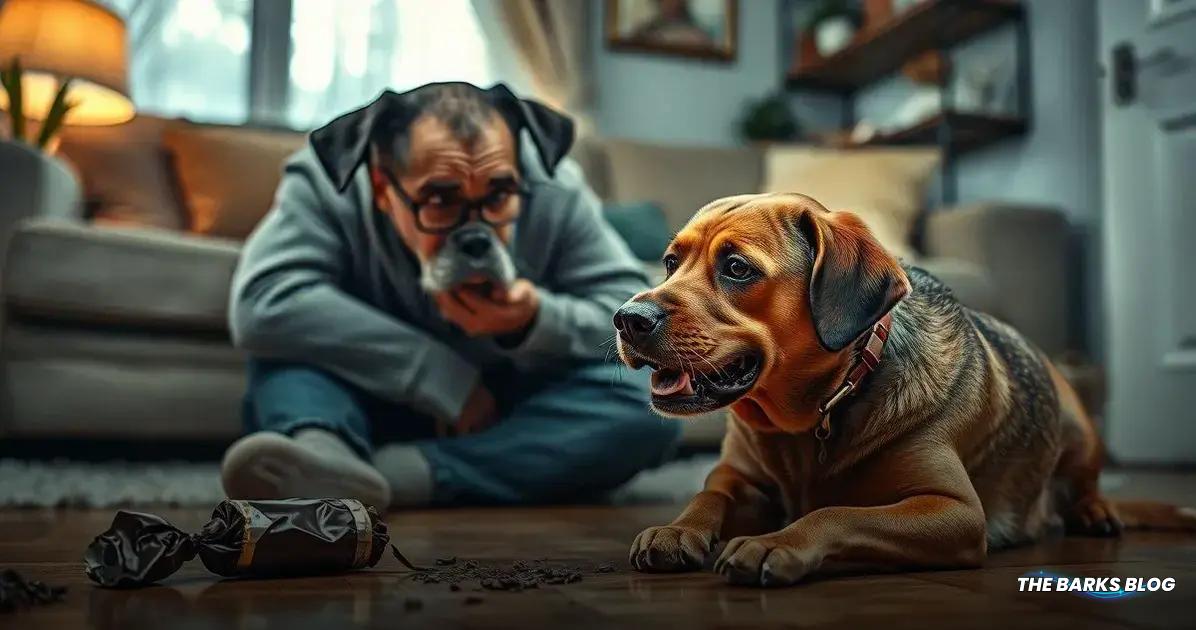Chocolate is toxic to dogs due to the presence of theobromine, which can cause serious health issues. Dark chocolate and cocoa powder are particularly dangerous. Symptoms of chocolate poisoning include vomiting, diarrhea, restlessness, and abnormal heart rates, typically occurring 6 to 12 hours after ingestion. If a dog eats chocolate, it’s crucial to contact a veterinarian immediately. To prevent such incidents, keep chocolate stored securely away from pets.
As a dog owner, understanding the dangers of chocolate toxicity in dogs is crucial. Chocolate may be a delightful treat for us, but it can be deadly for our furry companions. In this article, we will explore why chocolate is harmful, the symptoms of poisoning, and essential tips to keep your pup safe.

Understanding Chocolate Toxicity
Understanding chocolate toxicity is essential for every dog owner. Chocolate contains a substance called theobromine, which is toxic to dogs. While humans can metabolize theobromine safely, dogs process it much more slowly, making them susceptible to poisoning.
The amount of theobromine varies depending on the type of chocolate. Dark chocolate, for instance, contains significantly higher levels than milk chocolate or white chocolate. Even small amounts of chocolate can be harmful to dogs, especially smaller breeds, as their bodies are less equipped to handle toxins.
It’s not just the type of chocolate that matters; the size of your dog plays a crucial role too. A larger dog might tolerate a small amount of chocolate better than a tiny breed, but it’s always safer to err on the side of caution. Remember, what may seem like a harmless treat to you could lead to serious health issues for your pup.
As a responsible pet owner, it’s vital to keep chocolate out of reach and educate yourself on the potential dangers. Awareness is the first step in preventing chocolate toxicity and ensuring your furry friend remains safe and healthy.

Types of Chocolate and Their Risks
When it comes to types of chocolate and their risks, it’s crucial to understand that not all chocolates are created equal. Each type contains varying levels of theobromine, which directly impacts how dangerous it is for your dog.
1. White Chocolate: While it contains the least theobromine compared to other chocolates, it’s still not safe for dogs. White chocolate is primarily made from cocoa butter, but it can still cause gastrointestinal upset and other health issues if consumed in significant amounts.
2. Milk Chocolate: This type has more theobromine than white chocolate, making it more dangerous. Even a small amount can cause problems, especially for smaller dogs. It’s important to monitor your dog closely if they accidentally consume milk chocolate.
3. Dark Chocolate: Dark chocolate is much more hazardous due to its high cocoa content, which means higher levels of theobromine. Even a small piece can lead to severe symptoms, and the risk increases with the percentage of cocoa solids in the chocolate.
4. Cocoa Powder: This is the most toxic form of chocolate for dogs. Cocoa powder is concentrated and contains a significant amount of theobromine. If you have cocoa powder in your kitchen, it’s essential to store it securely out of your dog’s reach.
Understanding these differences can help you take the necessary precautions to keep your dog safe. Always remember that any chocolate can pose a risk, so it’s best to avoid giving chocolate to your dog altogether.

Symptoms of Chocolate Poisoning
Recognizing the symptoms of chocolate poisoning in dogs is crucial for prompt treatment. Symptoms can vary based on the amount and type of chocolate consumed, as well as the size of the dog. Here are some common signs to watch for:
- Vomiting: This is often one of the first signs you may notice. If your dog has ingested chocolate, they may vomit shortly after.
- Diarrhea: Chocolate can upset your dog’s stomach, leading to diarrhea. This can occur within a few hours after consumption.
- Restlessness: Dogs that have ingested chocolate may become unusually hyperactive or restless. They might pace around or seem unable to settle down.
- Abnormal Heart Rate: Chocolate can cause an increased heart rate, which may manifest as a rapid heartbeat or even arrhythmias. If you notice your dog’s heart racing, it could be a sign of chocolate toxicity.
- Increased Urination: Some dogs may show signs of frequent urination due to the effects of theobromine on their bodies.
Symptoms can start to appear anywhere from 6 to 12 hours after ingestion, but in some cases, they may take up to 72 hours to show. If you notice any of these symptoms, it’s essential to contact your veterinarian immediately. Early intervention can be critical in treating chocolate poisoning effectively.

What to Do If Your Dog Eats Chocolate
If you suspect that your dog has eaten chocolate, it’s important to act quickly. Here’s what you should do:
1. Assess the Situation: Determine how much chocolate your dog has consumed and what type it was. If you have any wrappers, take them with you to the vet as they can provide crucial information about the amount and type of chocolate ingested.
2. Contact Your Veterinarian: Regardless of the amount consumed, it’s always a good idea to call your vet immediately. They can provide guidance based on your dog’s size, the type of chocolate, and the amount ingested.
3. Do Not Induce Vomiting Without Guidance: While inducing vomiting may be necessary in some cases, it should only be done under the direction of a veterinarian. They will advise you on the best course of action based on your dog’s specific situation.
4. Monitor Your Dog: Keep a close eye on your dog for any symptoms of chocolate poisoning. Be aware that symptoms can take several hours to appear, so it’s essential to remain vigilant.
5. Follow Veterinary Instructions: Your vet may recommend bringing your dog in for an examination. They might administer activated charcoal to limit the absorption of theobromine or provide other treatments depending on the severity of the situation.
Remember, the sooner you act, the better the chances are for your dog’s recovery. Always err on the side of caution when it comes to chocolate and your furry friend!
Conclusion
In conclusion, understanding the dangers of chocolate toxicity in dogs is vital for every pet owner. Chocolate may be a delightful treat for us, but it poses serious risks to our furry companions.
By being aware of the different types of chocolate and their associated dangers, recognizing the symptoms of poisoning, and knowing how to respond if your dog ingests chocolate, you can help keep your pup safe.
Always take preventive measures to ensure chocolate is stored securely out of your dog’s reach, and never hesitate to seek veterinary advice if you suspect your dog has consumed chocolate.
Remember, quick action can make all the difference in ensuring your dog’s health and well-being. Keep your chocolate treats for yourself and provide your dog with safe and healthy alternatives!
FAQ – Frequently Asked Questions about Chocolate Toxicity in Dogs
What should I do if my dog eats chocolate?
If your dog eats chocolate, contact your veterinarian immediately. Assess how much and what type of chocolate was consumed and monitor for symptoms.
What are the symptoms of chocolate poisoning in dogs?
Symptoms can include vomiting, diarrhea, restlessness, abnormal heart rate, and increased urination. These may appear 6 to 12 hours after ingestion.
Is white chocolate safe for dogs?
While white chocolate contains less theobromine than other types, it is still not safe for dogs and can cause gastrointestinal issues.
How much chocolate can a dog safely consume?
No amount of chocolate is considered safe for dogs. Even small amounts can be harmful, especially for smaller breeds.
What types of chocolate are most dangerous for dogs?
Dark chocolate and cocoa powder are the most dangerous due to their high theobromine content. Milk chocolate is also risky, while white chocolate poses a lower risk.
Can dogs recover from chocolate poisoning?
Yes, dogs can recover from chocolate poisoning with prompt veterinary care. The sooner you act, the better the chances for a full recovery.




